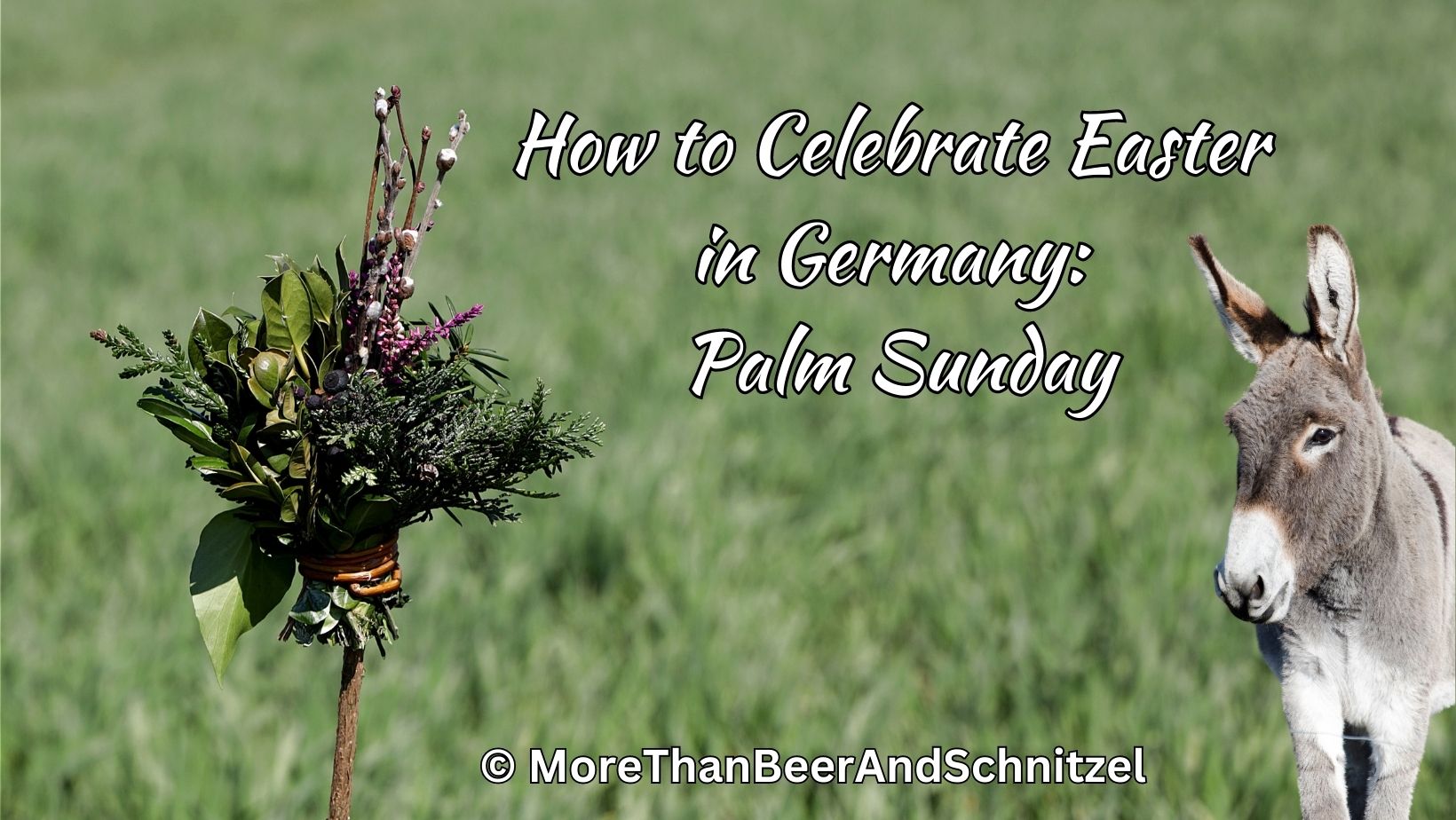Palmsonntag or Palm Sunday commemorates the entry of Jesus on a donkey into Jerusalem. The people greeted him enthusiastically with palm leaves and branches. It is the sixth Sunday of Lent and traditionally starts the Karwoche or Holy Week which ends with Easter Sunday.


Background Information
Jesus entering Jerusalem on a donkey fulfills the prophecy of Zechariah 9:9 in the Old Testament: “Rejoice greatly, O daughter of Zion; shout, O daughter of Jerusalem: behold, thy King cometh unto thee: he is just, and having salvation; lowly, and riding upon an ass, and upon a colt the foal of an ass.” (KJV)
Juble laut, Tochter Zion! Jauchze, Tochter Jerusalem! Siehe, dein König kommt zu dir. Gerecht ist er und Rettung wurde ihm zuteil, demütig ist er und reitet auf einem Esel, ja, auf einem Esel, dem Jungen einer Eselin.” (Sach 9,9 EU)
That Jesus is riding on a donkey and not on a horse is no coincidence. The horse is the animal of kings and soldiers symbolizing luxury and war. A donkey on the other hand stands for humility and non-violence. The palm branches too are full of symbolism: since antiquity they have represented victory, peace, homage, and eternal life.
Customs in Germany
In many Catholic regions in Germany, Palmprozessionen (palm processions) take place where the priest leads his congregation through the streets to the church. This custom has been around since the early Middle Ages.
In the later Middle Ages and especially during Baroque times, the processions had a Palmesel (palm donkey). At first it was a real donkey that was taking part in the procession, later it was replaced with a wooden donkey and a Christ figure. Nowadays, some parishes may still (or again) have a donkey (wooden or real) that goes along with the processions or is placed in the church.



Palmbuschen and Palmstangen
In these processions, people will carry Palmbuschen, Palmstangen, Palmstöcke, or Palmbesen that will then be blessed and be put with the crucifix in your house. Sometimes, people place the blessed sticks on their fields. Should you not have Palmbuschen to be blessed, many churches offer some in church where you can purchase them.
All these bushels or sticks stand for the palm leaves that people used to greet Jesus. They are regionally very different but all have some kind of greenery.

Palmbuschen are traditionally made with seven natural materials: pussy willow, boxwood, juniper, holly, yew, cedar, and savin. They are tied together and can be attached to a hazelnut branch or a stick. Often Palmbuschen and their variations are decorated with colored eggs, apples, oranges, pretzels, and streamers.






Palmbesen or Palmstangen have a longer stick than the Buschen. At the top boxwood branches are affixed, decorations are often small crucifixes. But there are also poles that are fully enveloped in greenery, decorated with colored eggs and streamers.
You can find more photos on my Pinterest Board.


In Franconia, specifically in Franconian Switzerland, the decorating of the Osterbrunnen, Easter fountains or Easter wells, start on Palm Sunday. Read about this 100 year old custom here.
Sources and Resources
- Wiki – Palmsonntag
- Erzbistum Köln
- Wiki – Palm Sunday
- Vivat – Palmsonntag
- YouTube Playlist
- Music (Affiliate Link)
- Pinterest Board
- Osterbrunnen, Easter Fountains, Easter Wells



Only registered users can comment.
Comments are closed.